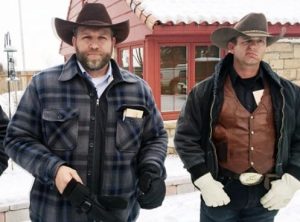
RANGEFIRE! is your source for “live” commentary and coverage of the Oregon Standoff Trial.
At RANGEFIRE! we recognize that there are multiple sides to every story. For contrasting MSM perspectives and reporting, you can also follow Maxine Bernstein for OregonLive, and Conrad Wilson for Oregon Public Broadcasting (OPB). Or, for other in-depth, alternative perspectives, follow Gary Hunt at Outpost for Freedom or Redoubt News. We believe there needs to be alternative voices to mainstream media commentary and coverage of these issues.
Working in combination with a consortium of alternative media outlets, including Newsbud/BFP, RANGE magazine, Free Range Report, Oregon Standoff News, Rural Route Radio, Loos Tales, and Redoubt News, etc., RANGEFIRE! will be providing coverage, and commentary, including some short video updates and deeper commentary regarding the OREGON STANDOFF TRIAL.
Note: We will be adding video clips and written coverage and commentary on an ongoing basis, so scroll down to find new clips and coverage segments as the trial progresses.
INTRODUCTION — GETTING STARTED
DAY 1 — Tuesday, September 13, 2016
OPENING STATEMENTS — the Defendants and their Attorneys
COURTROOM COLOR COMMENTARY
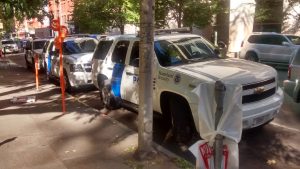
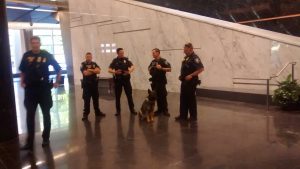
BACKGROUND COLOR — SECURITY & TECHNOLOGY CHALLENGES
OPENING STATEMENTS — One Size Doesn’t Fit All
OPENING STATEMENTS — Public Lands Policy on Trial
OPENING STATEMENTS — It Was All About the Hammonds
DAY 2 — Wednesday, September 14, 2016
GOVERNMENT WITNESS TESTIMONY
HARNEY COUNTY SHERIFF DAVID WARD
BUTCH EATON & LT. BRIAN NEEDHAM
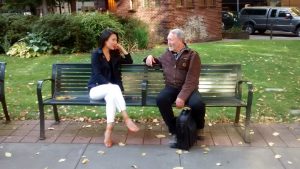
Defendant Ken Medenbach in a media interview outside the courthouse
DAY 3 — Thursday, September 15, 2016
NEWSBUD PERISCOPE INTERVIEW Regarding Trial Updates up to this point
BUTCH EATON CROSS EXAMINATION
CHAD KARGES EXAMINATION (Sorry About the Misspelling on the Videos)
DAY 4 — Friday, September 16, 2016
NEWSBUD PERISCOPE INTERVIEW re: Trial Updates
JEFF ROSE
FBI SOCIAL MEDIA WITNESSES
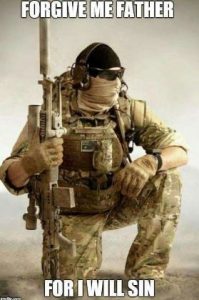

MOTION FOR MISTRIAL
BACKGROUND COLOR — Jeff Banta / Trent Loos
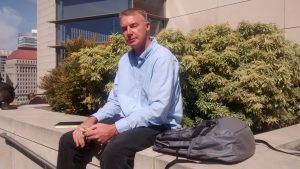
Defendant Jeff Banta eating lunch at the Portland Federal Courthouse
Note: Since we don’t have unlimited resources, RANGEFIRE editor, Todd Macfarlane, will not be able to report live from Portland during the entire trial. Based on other contacts and connections in Portland, however, we will be providing both written and video updates, even when Macfarlane is not on the ground at the trial. These reports will be based on – information, but will hopefully help interested parties follow developments in the case as it progresses.
DAY 5 — Monday, September 19, 2016.
 Today, the government’s first witness was Linda Beck, a MNWR fish biologist, whose office Ammon Bundy used during the occupation. She testified about her duties at the refuge, and the government’s efforts to remove invasive carp fish from the shallow lakes. During both the government’s opening statement, and during Beck’s direct examination, it was stated that the Refuge had planned to bring in a commercial fishing enterprise during the month of January, to help remove the carp. This representation certainly raised eyebrows because the water would have been frozen, and it was difficult to understand how a commercial fishing effort would work under those conditions. On cross examination, however, Beck admitted that the commercial fishing effort was actually planned and scheduled for April. Beck also testified that despite the fact that she had not been at the refuge during the month of January, she continued to work and do her job, and was paid, just like all the other refuge employees were. She said that when she returned to the refuge her office was a big mess, and looked like it had been trashed, but on cross examination she admitted that she didn’t know who had made the mess, and couldn’t say that it might not have been the FBI that made the mess. One of the most important points of Beck’s testimony came when she was shown a photo of a whiteboard in her office.
Today, the government’s first witness was Linda Beck, a MNWR fish biologist, whose office Ammon Bundy used during the occupation. She testified about her duties at the refuge, and the government’s efforts to remove invasive carp fish from the shallow lakes. During both the government’s opening statement, and during Beck’s direct examination, it was stated that the Refuge had planned to bring in a commercial fishing enterprise during the month of January, to help remove the carp. This representation certainly raised eyebrows because the water would have been frozen, and it was difficult to understand how a commercial fishing effort would work under those conditions. On cross examination, however, Beck admitted that the commercial fishing effort was actually planned and scheduled for April. Beck also testified that despite the fact that she had not been at the refuge during the month of January, she continued to work and do her job, and was paid, just like all the other refuge employees were. She said that when she returned to the refuge her office was a big mess, and looked like it had been trashed, but on cross examination she admitted that she didn’t know who had made the mess, and couldn’t say that it might not have been the FBI that made the mess. One of the most important points of Beck’s testimony came when she was shown a photo of a whiteboard in her office. 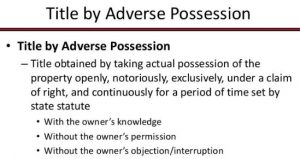 When the image of the Whiteboard was blown-up to see what it said, at the top of the board were the words “Adverse Possession,” with elements listed under that heading. Beck testified that neither she, nor any other refuge employees had written these things on the whiteboard.
When the image of the Whiteboard was blown-up to see what it said, at the top of the board were the words “Adverse Possession,” with elements listed under that heading. Beck testified that neither she, nor any other refuge employees had written these things on the whiteboard.
Carla Burnside, the Refuge archeologist testified that the refuge headquarters had actually been built on top of an archeological site — back before it was unlawful to do that. She acknowledged that there are thousands of artifacts housed in a basement on the Refuge, that have never been displayed, and there is no current plan to display them.
Videos were shown of messages Ammon Bundy allegedly posted on social media, along with Blaine Cooper, Jon Ritzheimer and Jason Patrick. In Ritzheimer’s video, he says “we will never fire unless fired upon.” In Ammon Bundy’s video, after telling reporters that he had been in Harney County for two months working to try to do something to help Dwight and Steven Hammond, Ammon says “We feel we have exhausted all prudent measures and have been ignored.”
Twenty-three year-old Nick Bleuler testified that when he arrived at the refuge on January 2nd, the day the occupation began, he encountered men with rifles. Bleuler said that he didn’t have a firearm, but went to the refuge to support the Hammonds, and to protest land grabs. He testified that he helped take down the FBI cameras installed at the Refuge, near the headquarters, which among other things, recorded all license plates coming and going at the refuge.
DAY 6 — Tuesday, September 20, 2016
The Government is moving through its evidence fairly quickly, and has indicated that it will probably rest its case about next Monday or Tuesday, which means that the government will have put on its entire case in less than two weeks. Exactly what does that mean? More important than quantity is the quality of the government’s evidence. One of the reasons we are summarizing the evidence is so that you can judge for yourself whether the Government has presented sufficient evidence to prove beyond a reasonable doubt that there was a conspiracy to impede and interfere with federal officers, and exactly who was a part of that conspiracy.
Today the Government presented evidence through Harney County Deputy, Lucas McLain, FBI Special Agent Ben Jones, FBI surveillance pilot Jeffrey Cleveland, and four MNWR employees, including Ryan Curtis, Jesse Wenick, Shane Theall and Edward Moulton.
The employees testified about their absence from the refuge during January and early February, based on instructions from their supervisors, and the condition they found the premises in when they returned. They testified that they found things “messy and rummaged through,” and about government vehicles and equipment that had been used by the Defendants. Once again, social media evidence, including Facebook and YouTube images and videos were used to document such usage, and the parties involved.
Deputy McLain testified about transporting the defendants, including Ammon Bundy, shortly after their initial arrest, before handing them off to the FBI for transportation to Portland. He said that he discovered Ammon had been talking on his cell phone.
Part of my role in this whole alternative media coverage equation is to provide commentary, so I’m going to provide more of that in this segment. Like I have mentioned in some of the longer pieces I have written about the trial, I have people ask me all the time why the Government is presenting some of the evidence it is — including the fact that Ammon talked on his cell phone after he was arrested. My answer is “I don’t know.” They ask me all the time, what, if anything, this kind of evidence does to support the Government’s case. And again, it 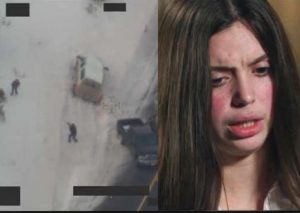 leaves me scratching my head too. Is this the best evidence the Government has of an alleged conspiracy — the fact that Ammon Bundy would call his wife to tell her that he had been arrested? Or, that Victoria Sharp, who was also being transported (but has never been charged), and over the course of several hours of detention had repeatedly requested to be allowed to relieve herself, but had been denied, so eventually she had no choice but to urinate in the vehicle. Is this the best evidence they have? How does it help the Government’s case? Good question. I can only speculate that it is intended to show that they don’t follow orders well — when Victoria Sharp, who isn’t even a defendant in the case, is ordered to hold it indefinitely, she just didn’t play by the rules. Likewise, when Ammon Bundy and the others were ordered to be quiet, that whispering to his wife on his cell phone was a violation of that command. The government is trying to show that all of them are renegade rule-breakers who don’t do everything they’re told.
leaves me scratching my head too. Is this the best evidence the Government has of an alleged conspiracy — the fact that Ammon Bundy would call his wife to tell her that he had been arrested? Or, that Victoria Sharp, who was also being transported (but has never been charged), and over the course of several hours of detention had repeatedly requested to be allowed to relieve herself, but had been denied, so eventually she had no choice but to urinate in the vehicle. Is this the best evidence they have? How does it help the Government’s case? Good question. I can only speculate that it is intended to show that they don’t follow orders well — when Victoria Sharp, who isn’t even a defendant in the case, is ordered to hold it indefinitely, she just didn’t play by the rules. Likewise, when Ammon Bundy and the others were ordered to be quiet, that whispering to his wife on his cell phone was a violation of that command. The government is trying to show that all of them are renegade rule-breakers who don’t do everything they’re told.
Deputy McLain testified that he and FBI Agent Ben Jones searched the defendants, and found $8000 cash in an envelope in Ammon’s jacket pocket, including a receipt showing that he had withdrawn it from his account the previous day (1/25) in Idaho. In his wallet they found receipts, dated 1/1/2016 from a BiMart in Nampa, Idaho, showing purchases of winter boots, Federal ammunition, and three cheap rifle scopes. But Ammon was not armed at the time, and no evidence has been presented that he was ever armed at the Refuge.
When Ammon’s attorney, Marcus Mumford, asked Agent Jones if there was anything illegal about withdrawing cash or buying ammunition or rifle scopes, he had to admit that there was not anything illegal about it. The insinuation was that Ammon intended to be at the Refuge for a long time..
On cross-examination, Ryan Bundy asked MNWR fire management officer, Shane Theall, if he had ever had any prescribed burns burn more than the area intended, to which he responded that he had. Ryan then asked him if he had ever been charged with arson terrorism for doing that, to which the government objected, and moved to strike the question. Ryan Bundy also asked FBI surveillance pilot Jeff Cleveland if he liked spying on his fellow Americans, to which the government again objected and moved to strike.
In their cross examinations of the witnesses, the defendants and their attorneys asked numerous questions to which the Government objected, with Judge Brown virtually always sustaining their objections. At several points Judge Brown admonished them that she was going to cut of any further cross-examination if they tried to probe any further. Although the Government is on the offensive, and has the burden of proof, if there is one way its case can be characterized, it is “defensive.” The government is very defensive about its own actions, and anything to do with its own motives — which Judge Brown has said are not on trial in this case.
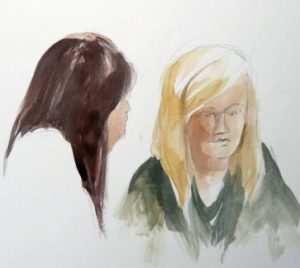 But the biggest development in the case today did not come in the Government’s case, through any of the witnesses it called, or any of the evidence it presented. The biggest news came via notice filed by Defendant Shawna Cox accusing the Government of coaching its witnesses on the witness stand. Cox filed an affidavit in support of her motion, signed by someone else observing the trial, stating that in addition to the prosecuting attorneys, the Government also has a team of people who come into the courtroom on an alternating basis and coach the witnesses through hand signals, etc. According to the affidavit, based on vantage points in the crowed court room, virtually the only people who can actually see what is going on are the witnesses and the judge. According to the affidavit, the team coaching Sheriff David Ward including FBI Special Agent in Charge, Greg Bretzing, and Oregon U.S. Attorney Billy Williams. Of course the government denied that anything akin to witness coaching was going on.
But the biggest development in the case today did not come in the Government’s case, through any of the witnesses it called, or any of the evidence it presented. The biggest news came via notice filed by Defendant Shawna Cox accusing the Government of coaching its witnesses on the witness stand. Cox filed an affidavit in support of her motion, signed by someone else observing the trial, stating that in addition to the prosecuting attorneys, the Government also has a team of people who come into the courtroom on an alternating basis and coach the witnesses through hand signals, etc. According to the affidavit, based on vantage points in the crowed court room, virtually the only people who can actually see what is going on are the witnesses and the judge. According to the affidavit, the team coaching Sheriff David Ward including FBI Special Agent in Charge, Greg Bretzing, and Oregon U.S. Attorney Billy Williams. Of course the government denied that anything akin to witness coaching was going on.
I am going to have to admit that Shawna Cox, who represents herself, has made some bizarre filings in this case, but this is one that I’m not going to have the same knee-jerk reaction to that many do and automatically reject it. The reason I’m not is based on my own experiences and observations. I’ve seen this sort of thing happen.
Almost exactly three years ago I was trying a six-day jury trial in federal court here in Utah. It was a civil rights case against a local county that I had inherited from one of my local attorney friends who had been killed in a car accident. Base on what I spend most of my time doing, I hadn’t tried a case in some time. At one point in the case I had one of the county commissioners on the stand for aabout a day and half. Because he was an adverse witness, I was able to use leading questions in my direct examination. He started out very smug and cavalier in his testimony. When court adjourned for the day after I had been examining this witness for several hours, one of the court observers told me that the county’s insurance defense attorney had been clearly coaching and signalling the witness during the examination, and the witness was continually looking to the attorney for cues. This person suggested that I position myself 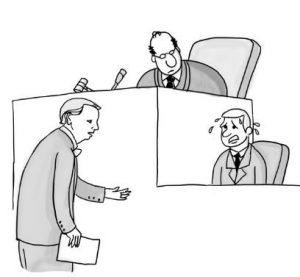 between the witness and his attorney to help prevent that from happening. The next morning I too noticed that the witness was always looking to his attorney for signals and direction. Unlike the Oregon Standoff trial where the attorney remain seated to conduct their examinations, in most trials attorneys are allowed to stand and even roam as they ask questions. In that case I was careful to place myself so that I would obstruct the witness’s view of his attorney. Big beads of sweat started to form on his brow. He really started to squirm, and his attorney objected to my location in the courtroom, to which the judge said she found nothing wrong with it. At that point I did back up a little bit, but continued to carefully block the witness’ view. Left to testify without coaching, eventually the witness completely fell apart. He became very emotional, and blurted out that he thought the plaintiff in the case was a real jerk, and he had no reservation bending the law to stick it to him. So based on my own personal experiences, I am not going to reject Cox’s notice so lightly. It actually seems consistent with what I have observed in the case so far.
between the witness and his attorney to help prevent that from happening. The next morning I too noticed that the witness was always looking to his attorney for signals and direction. Unlike the Oregon Standoff trial where the attorney remain seated to conduct their examinations, in most trials attorneys are allowed to stand and even roam as they ask questions. In that case I was careful to place myself so that I would obstruct the witness’s view of his attorney. Big beads of sweat started to form on his brow. He really started to squirm, and his attorney objected to my location in the courtroom, to which the judge said she found nothing wrong with it. At that point I did back up a little bit, but continued to carefully block the witness’ view. Left to testify without coaching, eventually the witness completely fell apart. He became very emotional, and blurted out that he thought the plaintiff in the case was a real jerk, and he had no reservation bending the law to stick it to him. So based on my own personal experiences, I am not going to reject Cox’s notice so lightly. It actually seems consistent with what I have observed in the case so far.
MIDSTREAM BACKGROUND COLOR COMMENTARY
Meanwhile Back at the Ranch — Color Commentary — Background Introduction
Commentary Regarding the Charges
Clarification re: Theft Charge: Misstated that the Theft of Government Property charge only applies to Defendant Ken Medenbach. Ryan Bundy is also charged with theft of government property based on alleged removal of the FBI surveillance cameras.
Commentary re: CONSPIRACY CHARGE
Commentary re: ADVERSE POSSESSION
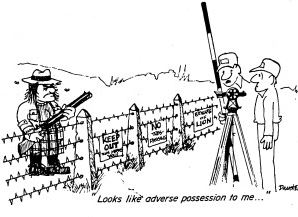
Commentary re: JUDICIAL TRANSPARENCY
DAY 7 — Wednesday, September 21, 2016
Today, Oregon State Police Trooper Jeremiah Beckert confirmed what many have suspected for a long time — that Mark McConnell was a government informant, and was providing “intel” to the government for the arrest operation. Beckert also testified about the arrests of Ammon Bundy, Brian Cavalier, and supposedly Mark McConnell, who was immediately released and shortly afterward produced a video stating that he had seen the shooting of LaVoy Finicum and that Finicum had been “charging” the officers.
Judge Brown repeatedly warned the Defendants and their attorneys that discussing and questioning witnesses about the shooting of LaVoy Finicum was off-limits, but she allowed the government to ask questions about Finicum and the circumstances surrounding his shooting. In the afternoon, the government called Deschutes County Sheriff Detective Ron Brown to testify. He held up handguns, and claimed that they belonged to LaVoy Finicum, stating that one — with one round in the gun — was on Finicum’s person, and the other was found on the floorboard of his pickup, under the driver’s seat. He also held up .223 caliber rifles, and testified that they were found under the back seat of Finicum’s truck.
In light of the fact that Judge Brown has repeatedly stated the Finicum’s shooting death is completely irrelevant to the case, and her repeated warnings to the defendants and their attorneys about it, it is very interesting that she continues to allow the prosecution and its witnesses to talk about, and present evidence about it. Her apparent reasoning is that it helps support the charge of conspiracy to impede or interfere with federal officers. But she won’t allow the defendants to explore anything about it.
The prosecution also presented evidence about the remaining four “hold-outs” who remained at the refuge until their final surrender on February 11th. This evidence included photographs, and recordings of the negotiations between the FBI and the four last remaining hold-outs, including Jeff Banta, David Fry, and husband and wife, Sean & Sandra Anderson. This evidence was presented through FBI Special Agent Marc Maxwell, who was doing much of the negotiation for the FBI.
The prosecution played at least four recordings of telephone conversations between Maxwell and Jeff Banta. When Maxwell asked what they wanted, Banta said the main thing they wanted was the Hammonds released — this whole thing is about the Hammonds.
Banta also told Maxwell that they were concerned that they were going to be murdered just as LaVoy Finicum had been. Although Maxwell said they would be given safe passage to leave if they didn’t have any outstanding warrants, Banta and others in the background said they didn’t believe they could trust the FBI. Banta requested an independent third-party negotiator “that I can trust,” and suggested Reverend Franklin Graham, who was eventually contacted and became involved in the final negotiations. The government also played several of David Fry’s live streams from the refuge. By the end of the occupation, the four remaining hold-outs had removed themselves from the headquarters buildings, and were camping in a makeshift camp of their own in the West parking lot that they called “Camp Finicum” in honor of LaVoy. The goverment presented plenty of evidence that the last four hold-outs genuinely believed that they would probably meet the same fate as Finicum.
What follows is Shari Dovales’ report on Wednesday’s Proceedings, from ReDoubt News:
“The Malheur Protest Trial continued today with Judge Anna Brown repeating her orders to Ryan Bundy not to bring up the “FBI Cover-up”. “This is very serious controversy,” she told him. She warned him that if he attempted to bring up this point that she will have him removed from the courtroom and he will forfeit his right to represent himself.
Later in the morning, Oregon State Police (OSP) Trooper Jeremiah Beckert testified about January 26, 2016, the day the FBI and OSP set up an illegal Dead-man’s Roadblock on Highway 395 north of Burns.
Beckert testified that Mark McConnell, driver of the jeep, was a cooperating government informant that tipped them off as to the vehicles, which occupants were in the vehicles, etc. Beckert told the court that McConnell was the only occupant of the jeep that was armed. The other two passengers, Ammon Bundy and Brian Cavalier, were not armed.
Beckert brought with him a 24-page statement to refresh his memory, but stated that most of the events were very clear in his mind. “This was a High Profile incident,” he stated. “A once in a lifetime event.”
When defense attorney Mumford questioned him about the legality of the events, Beckert said, “It is not my job to understand the laws. It is my job to do what my supervisor tells me.”
Beckert testified that he was assigned to apprehend the jeep during the operation to arrest the protesters. He was in an unmarked truck, and when he saw the jeep he hit his lights and sirens and went up behind them. After the arrests of the jeep passengers, Beckert drove off to assist with the vehicle driven by LaVoy Finicum.
He testified that Finicum was on the ground and not moving when he arrived, and continued to describe the events after that, leading to the arrests of the remaining passengers.
Judge Brown attempted to limit how many details were discussed in front of the jury, but some made their way into open court. It was noted that no shots came from the truck, and several non-lethal rounds were shot towards the truck. The lethal rounds were not discussed.
“So the round that was shot into my shoulder, was it lethal or not lethal?” Ryan Bundy attempted to ask on cross-examination. This was another question that went unanswered.
Since the defendants perception is the main focus, it would have been nice to hear if they could have discerned the difference between lethal and non-lethal rounds being shot at them, however, the Judge was having none of that.
The prosecution has not presented a strong case, yet I am sure it will be enough for Judge Brown to send it to the jury. Let’s hope and pray that the jury is smart enough to see through them.
DAY 8, Thursday, September 22, 2016
There were two major themes in the case today. One was presentation of recordings of the negotiation discussions between the remaining hold-out occupiers at the Refuge, and the FBI. Many of the conversations are between FBI negotiators and Defendant Jeff Banta, whose discussions with the the FBI were played for the the jury. The other theme was Judge Brown’s discussion with Attorney Marcus Mumford about his questions about the shooting death of LaVoy Finicum. We will talk more about that below.
Jeff Banta’s conversations with the FBI were very interesting and remarkably candid. They help show that there were multiple diverse ideas and agendas at the Refuge and among refuge occupiers. The idea that all refuge occupiers on the same sheet of music and part of one grand conspiracy to impede federal officers might be a stretch.
Banta told FBI negotiators that he had to gone to the Refuge to support Dwight and Steven Hammond. He wanted to have a chance to meet their family. He thought if they were going to prison, he might even see if he could work for them as a ranch hand and help them out. He thought Bundys might be able to help make an introduction with the Hammonds. When negotiators asked Banta what he wanted and what it would take to get the remaining occupiers to leave, he said “There’s only one way out, and that’s to free the Hammonds.”
Banta decribed some of the other occupiers who had been at the Refuge as disorganized, and compared them to cartoon characters. He said he wouldn’t put much stock in many of them. “Half of them have their screws loose, I’m telling ya,” he said.
One interesting piece of evidence presented was an an aerial surveillance video showing Banta riding an ATV to a remote part of the refuge to remove a surveillance camera that was mounted on a tripod. In light of this, it is interesting to compare this evidence with evidence that others had removed surveillance cameras and were charged with theft of government property, but Banta was not. On this point, it is also worth noting that although no evidence has been presented that Banta was ever armed or possessed any firearm(s) on the Refuge, he has been charged with possession firearms, and on September 12th Banta had to remind Judge Brown that he too is still charged with possession.
Now, let’s turn attention to the discussion about evidence regarding LaVoy Finicum’s shooting death. Judge Brown has allowed the prosecution to present a variety of evidence about the shooting, but has refused to allow Attorney Mumford to ask questions about it on cross examination. Ultimately, Judge Brown reminded Mumford, repeatedly, that she had already ruled that she was not going to allow such questioning, and warned him that she was going to hold him in contempt, and fine him $1000, if he continued to pursue that line of questioning. She asked him if he understood. He responded “I understand the words,” implying that he understood what she was saying, but was struggling to understand why she was saying it, and refusing to treat both sides the same when it came to this line of questioning.
In light of this subject matter, the timing of a new anonymous video that has just been posted regarding detailed forensic analysis of LaVoy Finicum’s shooting is more than interesting. Because this video is very thought-provokiing, we are going to share it here. We have also created a post devoted just to this subject, including this video, and an additional, even more detailed, and thought-provoking video, along with additional written commentary by Attorney Fred Grant.
Recap of the Second Week of Trial
For our second week re-cap, we’re going to share Maxine Bernstein’s most recent article about Attorney Marcus Mumford’s trial tactics in defending Ammon Bundy:
According to Maxine Bernstein’s article, “It would be nearly impossible for jurors not to notice U.S. District Judge Anna J. Brown’s growing exasperation with Ammon Bundy’s lawyer Marcus Mumford.
Since the Bundy trial began two weeks ago, the judge has repeatedly told Mumford to follow her rulings, reword his questions to government witnesses and occasionally to either stand up when he addresses her or sit down and stop challenging her directives.
Despite her earlier orders that defense lawyers weren’t to raise questions at trial about who owns the Malheur National Wildlife Refuge, Mumford tried to solicit responses from the Harney County sheriff and refuge employees on the subject.
Despite the judge’s warnings that she didn’t want any defendant or defense lawyer to ask witnesses about the circumstances surrounding the fatal police shooting of occupation spokesman Robert “LaVoy” Finicum, Mumford passed off as a question a stinging remark that Finicum was shot three times in the back, asked another witness how close police were to him when he was shot and why the FBI wasn’t investigating the shooting.
Each time, prosecutors objected. Each time, the judge asked jurors to disregard Mumford’s bids to get around her edicts.
Out of earshot of the jury, Brown on Thursday had enough.
She threatened Mumford with contempt of court if he continued to delve into Finicum’s shooting. She told him she’d fine him $1,000 for each time he continued to violate her orders.
So how is this of any help to Bundy as he and six others fight federal conspiracy charges in the 41-day armed takeover of the bird sanctuary in eastern Oregon earlier this year?
Trial observers have wondered aloud whether Mumford is grasping at straws or if his approach is part of a calculated plan.
Legal experts, including a fellow defense lawyer in this case, suggest the latter.
“He knows what he’s doing. It’s intentional,” said Matthew Schindler, a lawyer helping co-defendant Kenneth Medenbach. “I don’t believe he makes choices without a strategic focus.”
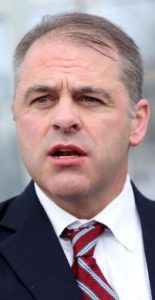 Mumford may be trying to mimic Bundy’s narrative – that the federal government hasn’t listened to his concerns and that’s why he needed to make a stand.
Mumford may be trying to mimic Bundy’s narrative – that the federal government hasn’t listened to his concerns and that’s why he needed to make a stand.
The judge’s consistent slap down of Mumford’s questions could play into his defense of Bundy, legal scholars and other lawyers say.
He could be setting up an argument to jurors at the end of the trial: “See, they aren’t even letting you hear about the most critical evidence in the case. The government can do what it wants, and they’re not even giving us a fair fight,” said Portland criminal defense lawyer Kevin Sali.
Or perhaps Mumford’s marathon cross-examinations of witnesses – marked by seemingly random questions far beyond the scope of the charges and long pauses as he figures out his next query – might be designed to confuse jurors.
With the government’s case resting heavily on the defendants’ own recorded statements and social media postings, photos and videos before, during and after the refuge occupation, “maybe all that’s left is trying to cast doubt about the government’s actions and the propriety of the government’s actions,” said Tung Yin, a Lewis & Clark Law School professor.
But the tactics could backfire – attorneys can risk losing face in front of jurors when they invite constant scolding.
“The judge – especially someone like Judge Brown, who keeps tight control over her courtroom – will typically be perceived by jurors as a trusted authority figure,” Sali said. “Being repeatedly shot down by such a person can harm a lawyer’s credibility in jurors’ eyes.”
In a case with many defendants, it also could make the other lawyers look better, Yin said.
Over the past two weeks, Mumford asked a refuge employee how many birds he estimated lived outside the refuge compared to the number on the refuge. It was stricken as irrelevant. Another time, Mumford slipped in a reference to adverse possession, a principle his client contends he was exercising when he occupied the refuge in an effort to return the property to the people of Harney County. Never mind that the judge has made clear that the federal government owns the refuge and any references to adverse possession must be restricted to the defendants’ state of mind if they take the stand themselves.
A few times, the judge has chided Mumford in front of jurors for mischaracterizing direct testimony during cross-examination. After a few witnesses misinterpreted Mumford’s questions, the judge advised him when jurors were out of the courtroom to simplify them and avoid using complex clauses, something she said experienced lawyers should know.
“On the one hand, a jury who sees an attorney repeatedly asking improper questions and getting shot down by the judge might think that attorney is not very competent, and be biased against the defendant,” said Andrew Kim, a Concordia University School of Law professor. “On the other hand, if the other side, the prosecution, is continually forced to object to questions that sound reasonable to the jury, it could give the impression that they have something to hide, which might work in the defendant’s favor.”
Bundy, considered the leader of the occupation, his older brother, Ryan, and the other five defendants each face a charge of conspiring to impede federal employees from working at the refuge through intimidation, threats or force. Eleven other defendants have pleaded guilty to the charge. Seven others are set for trial in February.
Ryan Bundy, who is representing himself and has no legal education, usually follows Mumford in cross-examining government witnesses. In contrast, his questions, for the most part, have been focused and direct, and on several occasions, the judge has overruled government objections to his questions. Ryan Bundy also has an experienced standby counsel and paralegal assisting him.
Schindler, who typically asks witnesses a few pointed questions and moves on, said he’s proud of Mumford.
“I’ve never seen anybody get Judge Brown so fired up,” Schindler said. “We’re not there to be friends with judges. Justice is not done by sitting down and shutting up.”
Yin said Bundy’s lawyer also may be trying to preserve a record for an appeal if his client is convicted: the court’s restrictions on his ability to question witnesses about Finicum’s shooting, for example.
The judge, though, also is likely wary of providing any fodder for Mumford to appeal.
“A trial judge has to be careful in a criminal trial not to clamp down on the defense,” he said. “It sounds like she might have tolerated more than she would have with Mumford already than she might have, say, with prosecutors or if this were a civil case.”
As for Mumford, this is par for the course for the pugilistic attorney.
While many lawyers in Brown’s courtroom Thursday said they had never witnessed a judge threaten an attorney with contempt before, it’s the second time this year for Mumford.
In February, a federal judge in Utah did the same during a criminal trial for the same type of offense – leading a witness during cross-examination into a forbidden area of inquiry. In that case, Mumford’s client, accountant Scott Leavitt, was acquitted of all 86 charges in an alleged influence-peddling scandal that included allegations of fraud, conspiracy and money laundering.
Mumford, who grew up on an Idaho dairy farm, told students at his alma mater, Idaho State University, in 2010 that he had to be “audacious enough” to enter the field of law with a significant stuttering condition he’s struggled with since age 4 because “the world wasn’t prepared for a stuttering lawyer.”
Mumford went on to graduate from Brigham Young University’s law school. He clerked for a federal appellate judge and worked eight years for one of the country’s biggest law firms, Skadden, Arps, Slate, Meagher & Flom, before returning to Utah to open his own practice.
Mumford told The Oregonian/OregonLive this week that he has tremendous respect for Judge Brown and doesn’t anticipate he’ll be found in contempt of her rulings. Yet he continued to defend his approach in court.
“My client has a right to confront the witnesses who are testifying against him,” he said. “I must zealously represent his interests. I have an obligation to ask all the relevant questions.”
He said he’s striving to show a link between what he and Ammon Bundy perceive as the government’s “misconduct” in the shooting of Finicum and what they contend is the government’s misleading view and mishandling of the refuge occupation.
“It’s the same governmental mistakes in how they reacted to the occupation itself,” Mumford said. “They didn’t engage in civil debate but engaged in wrongdoing and made up evidence that my client violated federal law.”
“It’s not easy to tell the federal government it’s wrong,” Mumford said.
— Maxine Bernstein
Note: It should be noted that despite his speech impediment and sometimes unorthodox approach, Attorney Marcus Mumford has a number of victories in high profile federal prosecutions in the state of Utah, including a lengthy white-collar conspiracy case earlier this year, in which his client was acquitted of 86 counts of alleged federal violations. Mumford is working with Attorney Morgan Philpot who has less litigation experience, but has political experience and is a former Utah state legislator and candidate for governor. They are also working with Rick Koerber, another of Mumford’s former high-profile clients, who is doing much of the research and writing of motions in the case.
DAY 9, Monday, September 26, 3016
Today was filled with more FBI agent witness testimony, primarily regarding searches of the Refuge that occured between February 12th and February 23, 2016. The FBI agents made a number of interesting finds, including over 1600 shell casings at the boat launch, and a “bunker” of sorts near the rear gate with an ammo box containing about 300 rounds of ammunition.
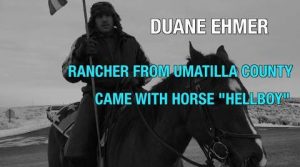 Duane Ehmer’s truck and trailer seemed to be a treasure trove of evidence. In addition to a rifle stuck in a pile of hay for Ehmer’s horse “Hellboy,” under one of the truck seats agents found a Refuge “pouch” containing Refuge gas cards, credit cards, etc., that was thought to have been locked up someone in one of the offices.
Duane Ehmer’s truck and trailer seemed to be a treasure trove of evidence. In addition to a rifle stuck in a pile of hay for Ehmer’s horse “Hellboy,” under one of the truck seats agents found a Refuge “pouch” containing Refuge gas cards, credit cards, etc., that was thought to have been locked up someone in one of the offices.
Agents testified about notebooks and “training” manuals detailing military-like “drills” that may have been intended to be used as part of the security strategy at the Refuge. For months there has been a lot of speculation about possible explosives at the Refuge. Some have suggested the possibility that there might be strong evidence of bomb-making and explosives, but according to evidence presented today, which is the only real evidence so far on the subject, the only thing that really turned-up in the explosive category was Tannerite, which is a very low-grade explosive that is often used in target shooting, and can be purchased over the counter. Although Tannerite can make big flashes and loud bangs, it is basically a “fireworks” grade explosive, with minimal actual impact.
Although no evidence has been presented that Ammon Bundy ever carried or bore a firearm while at the refuge, evidence was presented that agents found a rifle bag, with the name “Ammon” on it, 420 rounds of ammunition in his truck, and pretrial discovery included evidence that one of the rifles found at the refuge was purportedly registered to Ammon. Tomorrow, on the last day of presentation in the government’s case in chief, the government intends to wrap-up its case with a “firearms presentation,” whjich will undoubleldly talk about more firearms.
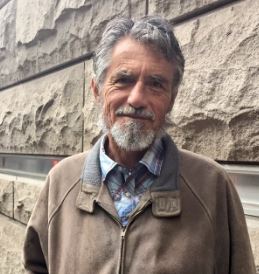 One FBI agent testified that in Defendant Neil Wampler’s conversations with the FBI, he described the protest at the Refuge as an act of civil disobedience, akin to what people like MLK and Ghandi have done. Although many may be unfamiliar with the role of guns and the right to bear arms in MLK’s activism, as discussed in this article by Chuck Norris, they played an important role.
One FBI agent testified that in Defendant Neil Wampler’s conversations with the FBI, he described the protest at the Refuge as an act of civil disobedience, akin to what people like MLK and Ghandi have done. Although many may be unfamiliar with the role of guns and the right to bear arms in MLK’s activism, as discussed in this article by Chuck Norris, they played an important role.
Like Ammon Bundy, no evidence has been presented so far that Wampler was ever armed at the Refuge. Apparently, his primary role was that of cook. And perhaps this helps highlight the fact that there were probably as many different objectives and agendas as there were people at the Refuge. The single biggest question in this trial is what was the primary purpose or objective of these particular Defendants? Did they share a primary objective? Was their primary objective to impede or interfere with federal officers? That is the issue.
The single biggest question with much of the evidence presented is how it supports the charge of conspiracy to impede and/or interfere with federal officers. According to the statute, there are three categories of actions that can be used to impede or interfere with federal officers: threats, force or intimidation. Multiple witnesses have testified that there were no direct threats. They have also testified that they felt intimdated by the mere mention of the names of some of the people who had been at Bunkerville, let alone awareness of their presence in the community. But there is no evidence that any of these people had any real or detailed information about the quantity and capability of firearms at the Refuge prior to making decisions to close federal offices and facilities before the occupation even began. Most of firearms evidence appears to fit in the “force” category. Although there is no evidence that any actual force was used, there may be evidence to support the theory that the occupiers were prepared to use force. Once again, the question will come down to “who,” and how that question applies to all these defendants individually. The other issue is whether or not there is sufficient evidence to prove that theory beyond a reasonable doubt. At this point, the government’s evidence does not seem to be particularly overwhelming. But the ultimate question for the jury is “is it enough”?
DAY 10 — Tuesday, September 27, 2016
To wrap-up its case, and evidence against the defendants, today the Government put on the much ballyhooed Gun Show, or “Firearms Presentation.” Although for the most part the FBI was not able to establish who owned or possessed most of the guns and ammunition, the FBI paraded in 22 rifles or shotguns (long guns) and 12 handguns, along with over 18,000 rounds of ammunition. The long guns were stacked in a teepee-like formation in front of the jury, and the ammuniction was hauled on a cart. Some have characterized this evidence and its presentation as “dramatic.” I call it judicial pageantry, used primarily to try to evoke some kind of emotional response.
The reality is little Little evidence was presented as to who most of the various firearms belonged to. It is fairly clear that after LaVoy Finicum was killed and Bundys were arrested in the fatal stop on January 26th, most people pulled-out and left the Refuge like rats fleeing a sinking ship. Most of them were concerned about getting stopped somewhere on their way out, and what effect having a bunch of guns and ammunition would have on that scenario, so they just dropped everything and left. There may have been 50-100 people at the Refuge at the time. When 34 firearms and 18,000 rounds of ammunition are divided over say 50 people, numjbers really aren’t all that impressive. But evidence was presented that Ammon Bundy had purchased a Savage .300 win mag hunting rifle in Glendale, Arizona in 2012, which was one of the guns found at the Refuge. 
Something I read in an OPB article, however, tipped me off to a very interesting issue. When Bundys were arrested, in support of the charges against them, FBI Agent Katherine Armstrong signed a sworn statement stating that Ammon Bundy possessed and was armed when a .40 caliber handgun when he was arrested. But she was never called to testify, and this never came out in the evidence at trial. When you consider the ramifications of this, along with the increasingly obvious lies and cover-up by the FBI HRT team in connection with LaVoy Finicum’s shooting death, if it doesn’t leave you stratching your head, it should.
Agents also testified that a handful of the guns were found on the front seat of David Fry’s car. They also testified that several guns were found in Sean & Sandy Anderson’s truck, which had a bumper sticker “Only Good Guys with Guns Can Stop Bad Guys with Guns.” Agents also testified that they found an unloaded 12 gauge shot gun in Jeff Banta’s truck.
Although the government did show quite a few guns and a lot of ammunition, they couldn’t tie most of the guns and ammunition to the seven defendants currently on trial, or any of the other named defendants in the case. Despite earlier attempts and arguments about evidence that Shawna Cox may have been armed at some point during the occupation, in the end the government presented no evidence that Cox had any guns at the Refuge, or that she was ever armed.
Despite the intended dramatic effect of the volume of firearms and ammunition, in many ways, it was actually quite anti-climatic. On cross-examination, FBI agents admitted that none of the firearms or ammunition were illegal, and that there was no evidence that firearms had been used to point at or threaten any federal employees.
We’ve talked about this before, but there is evidence that over the course of the occupation quite a few people came and went at the Refuge. It is fair to say that many of them had their own individual reasons, objectives, and motivations for being there. There has been much speculation that a number of the people who were there were government informants and/or agents provocateur. Such speculations have been further fanned by the fact that the government did not call any of those people as witnesses in the case, which would have subjected them to cross-examination.
Just as with new evidence regarding the shooting of LaVoy Finicum, there is growing evidence that the FBI was working very hard behind the scenes to stage evidence, which could include at least part of the guns, and perhaps a lot of the ammunition. This seems like an even greater likelihood given the disparity between the amount of ammunition that had previously been disclosed, versus the amount of ammunition the FBI claimed at trial had been found at the Refuge.
After less than 10 days of presentation of evidence, without hearing from many other witnesses who were on the government’s witness list and were supposed to testify about a variety of subjects, the Government rested its case instead. There are several possible reasons for this. Either the government is confident that it has put on enough evidence to convict, or it realizes that after having presented the best evidence it has, in the best way possible, its overall case and evidence are still quite marginal at best. In either case, it is pure speculation at this point.
Now the trial will be shifting to the Defendants’ case and evidence, which it is anticipated will take at least twice as long as the Government’s case. Part of the reason that is the case is because some have speculated that although there is supposed to be a presumption of innocence until proven guilty beyond a reasonable doubt, in this case there is actually an unstated presumption of guilt that the Defendants must attempt to overcome.
Once the Defense case starts, we will split our coverage into two parts so that it is not necssary to scroll down through this entire post to get to the latest information.
For contrasting perspectives and reporting, you can also follow Maxine Bernstein for OregonLive, and Conrad Wilson for Oregon Public Broadcasting (OPB), or Gary Hunt at Outpost for Freedom and Redoubt News. We believe there needs to be alternative voices to mainstream media commentary and coverage of these issues.
RANGE / RANGEFIRE! — Addressing Issues Facing the West / Spreading America’s Cowboy Spirit Beyond the Outback
You may also like
-
Arizona rancher sues to stop million-acre national monument
-
VDH: How to Destroy the American Legal System
-
Protect The Harvest: The whole truth about Western ranching
-
Colorado conservation group sues wildlife officials for skirting NEPA to get wolves into the state
-
Polis adds another radical activist to Colorado Parks & Wildlife Commission

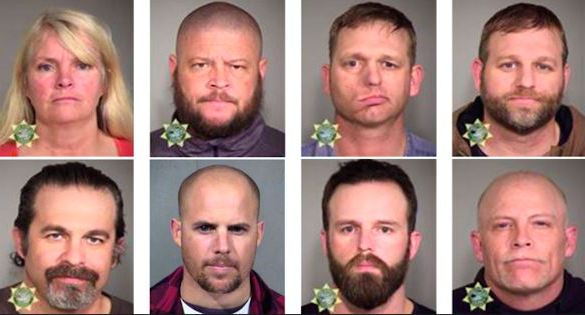
Please continue to keep us posted. Good reports.
How can the Bundys get a fair trial…when Harry Reid recommended the Federal Judge that is judging the case against the Bundys when it impacts Harry Reid financially? How can a judge be partial in a fed case when her boss can fire her and also reward her with cash if she “performs” the way they want her to? I see a conflict of interest and also how can you get any justice in federal Court when you’re going against the Federal Government?
Thank you, there are not many covering this and I agree, there is no reason it shouldn’t be live streamed!
Ownership has always been in federal governments hands,,,, for years the government encouraged settlement and for years were aloud to do what the people there wanted. Since population in late 1890s had wiped out many resources in placed government began restrictions also after the abuses that contributed to the great disaster “The Dust bowl”. After with the government distracted by WW2 and the cold war. People were doing what they Wantd to do to the land, giving many the false idea that it was their personal land. However with population swelling government began new restrictions to save what lands were left to be used for wildlife , recreation , hunting fishing logging , mining , and cattle , etc. It is hard to please everybody, but you must remember if the government did not put this land aside there would be nowhere many can go to get away from civilization. Because it would all be private and totally restricted like the east. Beware what you ask for as you might get it and not like it. For once it is gone it will be forever gone
Thank you so much for this coverage…its disgraceful of the Federal Government to hide this trial from The American People. …everything about this trial is hidden…remember OJ’s trial???
Wow. Awesome coverage. Thanks. Want more.
The Trent Loos interview with Butch Eaton can be heard at http://trentloos.podomatic.com/entry/2016-04-07T08_17_44-07_00
It is a very interesting interview and gives insight into a number of important aspects of this case.
Thank you so very much for reporting on this.
When are they going to address the 9th Circuit Court’s ruling?
Which ruling are you referring to?
http://rangefire.us/wp-content/uploads/2016/09/EOLC-Deed-1-300×232.jpg
The one where the court is directed to consider adverse possession.
There are several motions pending that address these related issues. Judge Brown has not yet ruled on them.
Excellent reporting. Thanks so much for your dedication and journalistic integrity, as well as raising awareness on this important Constitutional issue.
See our daily news e-zine for the Oregon Standoff Protest Trials in Portland here
http://oregonstandoff.info
Please add me to this.
Specific details of the abuse of the Hammonds can be found at http://outpost-of-freedom.com/blog/?page_id=1625
Just scroll down to the “Hammond Ranch” listing and the explanation of twenty years of the governments efforts to restrict their rights are documented. Those initial efforts by the government predate the fires that Steve and Dwight Hammond were eventually eventually convicted and imprisoned for.
The Hammonds have extinguished BLM runaway fires in the past. Now the little 2 1/2 acres of public land burned by the Hammonds has become a federal case because the fed has sold uranium resources from the hammonds grazing land. The deposit has been no secret for many years, but Gov’t greed has caused the uranium to be sold to the Russians and much of the money can be found within the Clinton Foundation.
THANK YOU SO MUCH FOR THIS MUCH NEEDED COVERAGE:
La Voy voice was truth crying from a dark place, and was silenced… but the echo that is bouncing off the canyon wall is faintly hear by others, and must be carryed to the valley floor.
Cindy Luelling
may g-d bless you and keep you safe.